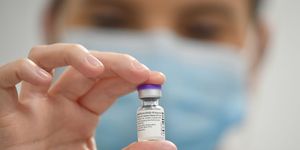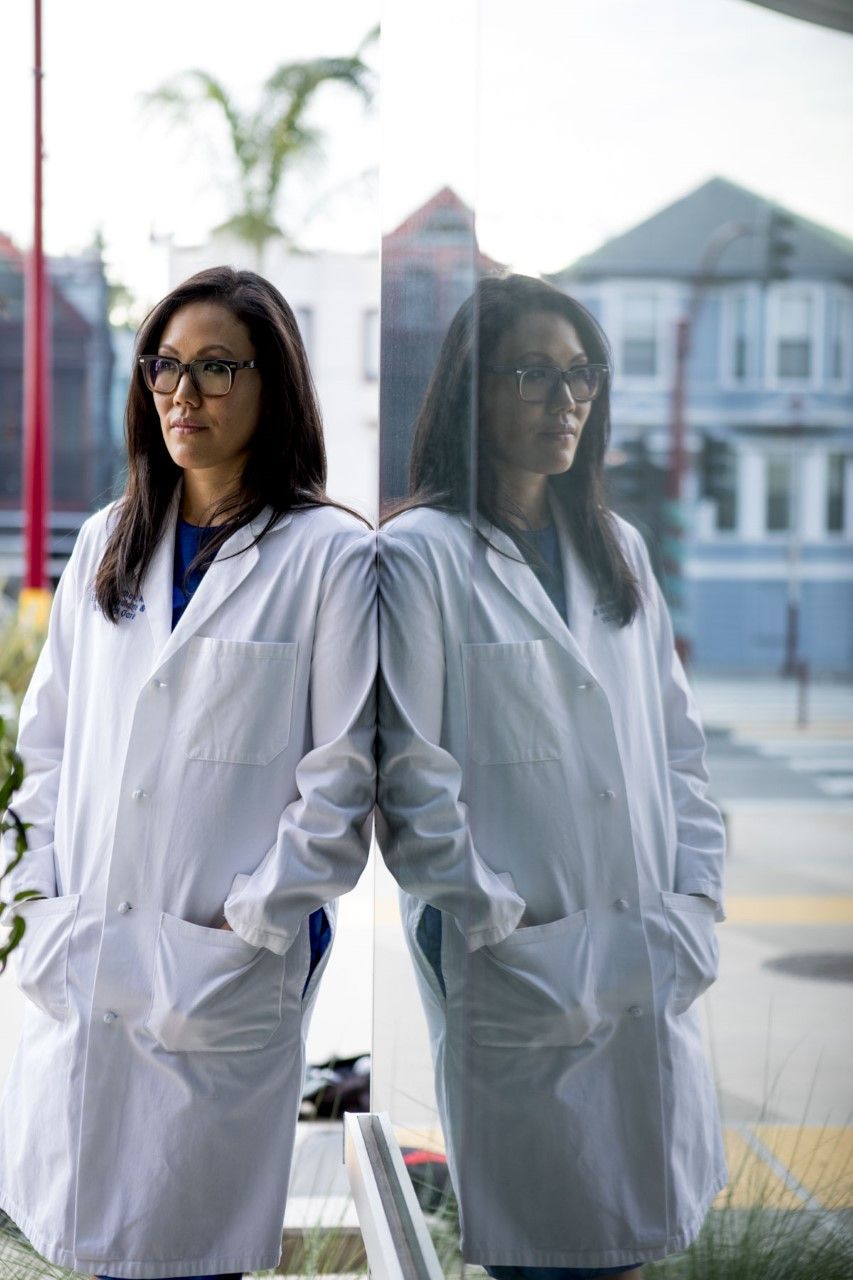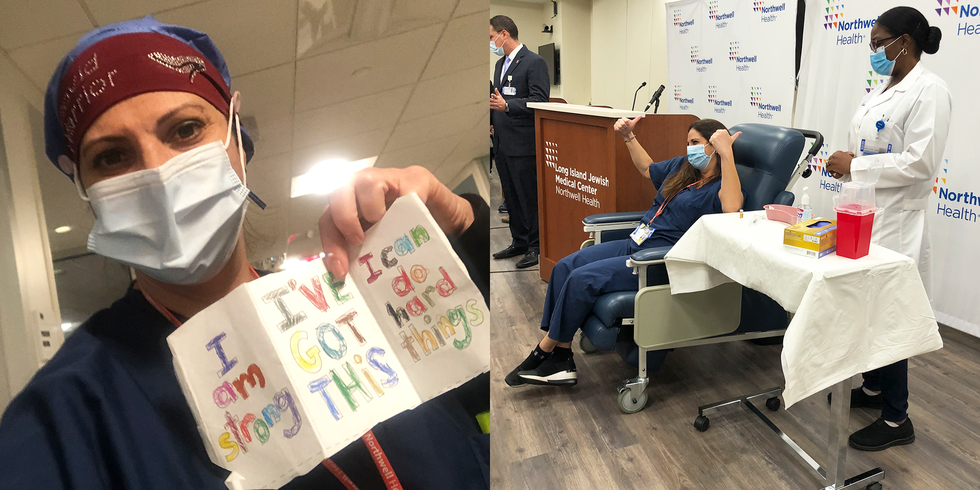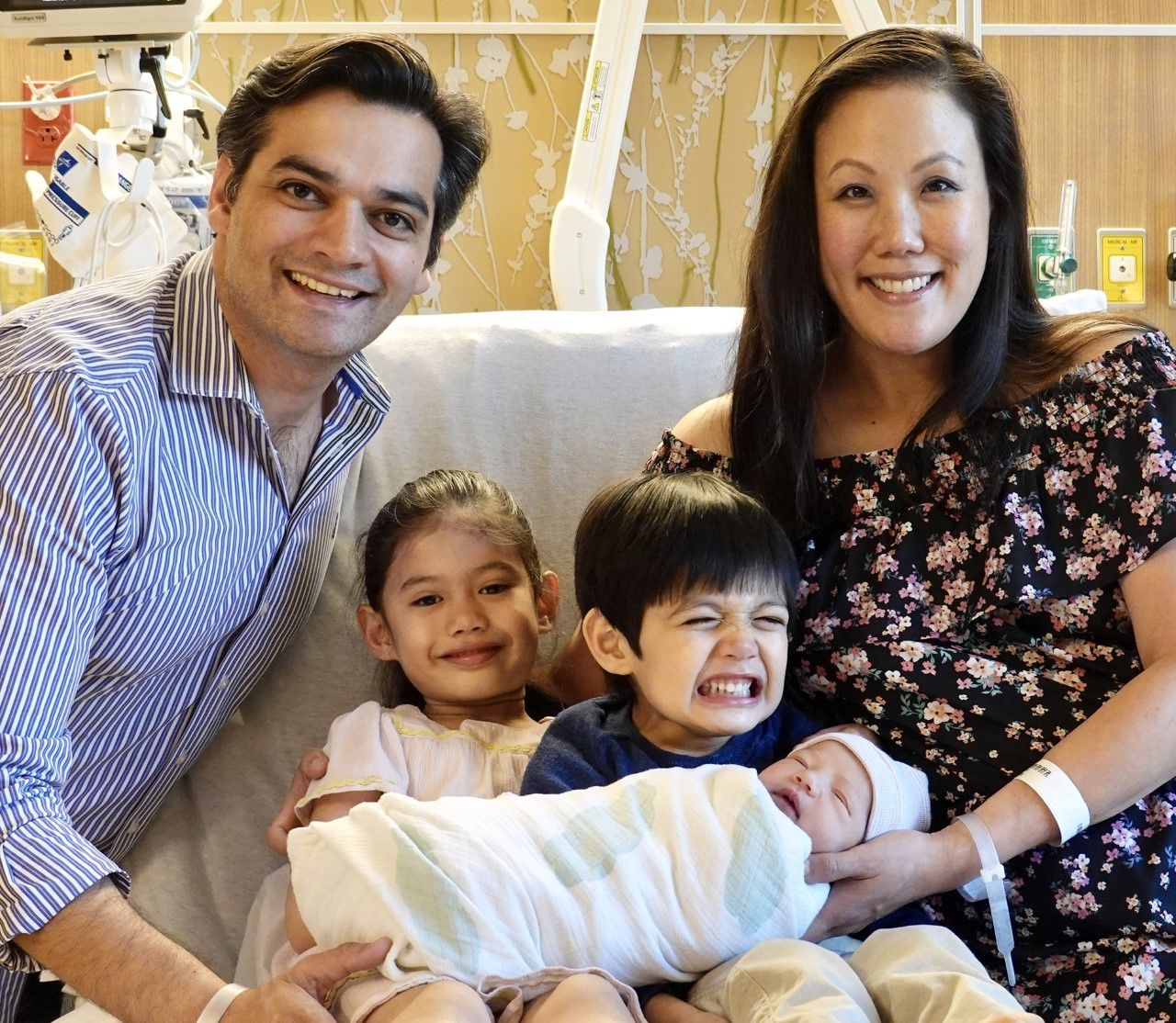\u2018I\u2019m A Breastfeeding Mom And An Emergency Room Doctor: This Is Why I Got Vaccinated Against COVID-19\u2019

Debbie Yi Madhuk, MD, is a 41-year-old breastfeeding mom who has been working on the frontlines of COVID-19 for months in San Francisco. She received her second dose of the Pfizer vaccine on Jan. 7.
As an emergency medicine physician who works in the intensive care unit, I’m in the highest risk group for COVID-19. So when I heard that a vaccine had been approved to protect against SARS-CoV-2, the virus that causes COVID-19, I immediately started doing my research.
As a physician, I sign up to assume a certain amount of risk. But I never imagined the danger that I would put my family in during a global pandemic. My daughter was 3 months old when the pandemic started last March. I didn’t know what kind of risk I was assuming for her or my family, including my 5-year-old and 3-year-old, by going to work and being exposed to the virus.
I knew that there could never be a breach in my PPE, or else I could get sick and risk spreading the virus to my family. I had to be so diligent—I even set up a decontamination station outside of my home. It’s been extremely stressful.
During this pandemic, being an emergency physician has been like waking up from the same nightmare every day. People are sick and dying, all by themselves in the hospital. And I have to break the bad news to their loved ones over a video call.
I watched my city lock down. I witnessed many people of color, who didn’t have the privilege of sheltering in place, stream in. I saw my colleagues in New York using garbage bags as gowns and the same N95 masks for weeks on end.
My family, my children, and I were outcasts in our community. People thought we were dangerous and didn’t want to be around us. No one asked us to be on their “quarenteam.”
This vaccine was my first glimmer of hope in 10 months.
I read the studies about the two FDA-authorized vaccines and kept up on the latest evidence. And, because I’m breastfeeding my now 14-month-old daughter, I read statements from the American College of Obstetricians and Gynecologists, Society for Maternal-Fetal Medicine, Academy of Breastfeeding Medicine, American Academy of Pediatrics, Centers for Disease Control and Prevention, and basically everything I could find about the recommendations on the vaccine for pregnant and breastfeeding moms.
The takeaway was the same: Animal studies did not find that the vaccine would cause harm to pregnant or breastfeeding individuals, but more data is still needed in humans. The vaccine should be offered to pregnant and breastfeeding moms, and those women should decide whether or not to get it.
I was already leaning toward getting the vaccine. I believe in science and evidence, after all. But I also don’t take anything at face value. I know that there isn’t any safety data on the vaccine’s impact on pregnant and breastfeeding women because researchers didn’t study the vaccine in those groups. That’s normal for vaccine development.
The CDC and other organizations essentially say that it’s up to pregnant and breastfeeding women to decide if they want to get vaccinated. At first, I didn’t know how messenger RNA (mRNA) vaccines worked, given that this is a fairly new technology. I later learned that the vaccines work by encoding a part of the spike protein found on the surface of SARS-CoV-2, the virus that causes COVID-19. The vaccine uses pieces of that encoded protein to prompt an immune response from your body and develop antibodies to the virus.
Once I read all of the data, I felt confident that the vaccine was the right choice for my family and me.
The chance to not live this nightmare every day is what the vaccine meant to me. Just a chance. Hope.
My family members had a healthy amount of hesitation and questions about the vaccine. My husband is also a physician, and he knew I was eager to get the vaccine, and he supported my decision.
To my kids, I explained the vaccine as I do to most people. The vaccine is like a hammer that recognizes the circular, flat part of a nail—the spike protein. Once you have the vaccine, when your body sees the nail’s flat part, it will always hit it with a hammer and get rid of it. As long as the top of the nail stays the same, the hammer will keep working despite variants.
I got the Pfizer-BioNTech vaccine on my day off, and it was an emotional moment for me.
Walking up to get my vaccine felt like being a part of history. Sitting in an upright chair six feet apart from my colleagues in a conference room felt like I was sitting in the audience, preparing to go on stage for the most incredible honor like a Nobel Prize or a Grammy.
My colleague was there at the same time, and I filmed his shot. I sent him the video and told his son to remember what is hopefully the turning point in these dark times.
Getting vaccinated was really the first moment in about 10 months that I actually felt hopeful about something. As a physician on this pandemic’s absolute front lines, the 10 months of my life leading up to vaccination were hands down the most difficult time in my life. By getting vaccinated, I knew that I was not only lowering the risk for myself but for my family, too.
https://www.instagram.com/p/CI6cFPBhtVz/
A post shared by Debbie Yi Madhok, MD (@debbieyi)
After I got my first shot, I felt terrific—emotionally and physically. I didn’t have any pain in my arm or anything. In fact, I felt so great that I did a workout afterward. I had a little soreness in my arm a few days later, but that was it.
I received my second vaccine three weeks after my first, on January 7. I knew going in that there was a higher chance of side effects. The day after getting my second shot, I felt like I might be getting a migraine. So, I took a 15-minute nap and felt better. A few days later, my arm was red, itchy, and a little swollen. After that, though, any side effects completely went away.
https://www.instagram.com/p/CJxNcbVBVPw/
A post shared by Debbie Yi Madhok, MD (@debbieyi)
I’m still breastfeeding my daughter, and that’s by design.
I’ve seen no changes in my milk production, although I didn’t anticipate that I would. I knew there was very little plausible chance that the mRNA vaccine would end up going from my bloodstream to my breast tissue to my breast milk. Even if it did, my baby would digest it lightly, like any other protein.
I weaned my other two children after breastfeeding them for a year, but there was no chance I would wean my daughter at that age during the pandemic. She has little to no way of protecting herself from this virus. She’s too young to wear a mask, and she’s not going to be offered a vaccine for a very long time. If there’s any chance that the antibodies I make against COVID-19 can be transferred in my breast milk to my baby, I absolutely want that.
While this was my decision, I want other breastfeeding women to know that it’s OK to question things about the virus. The science is evolving, but we know so much more about the virus than a year ago.
There are many studies happening right now on pregnant and breastfeeding moms, particularly with healthcare workers who got vaccinated. There will be more evidence on the vaccine for these groups soon. And eventually, the vaccines are going to be offered to more individuals.
As for me, I feel a huge sense of relief for myself and a lot of hope. And, while I feel fueled to keep on pushing to help people at work, I know that this is just the beginning. There are so many more people who need to get vaccinated. We’re so far from the end of this. This isn’t carte blanche to think that the pandemic has ended. We have so much more to do.
Source: Read Full Article




